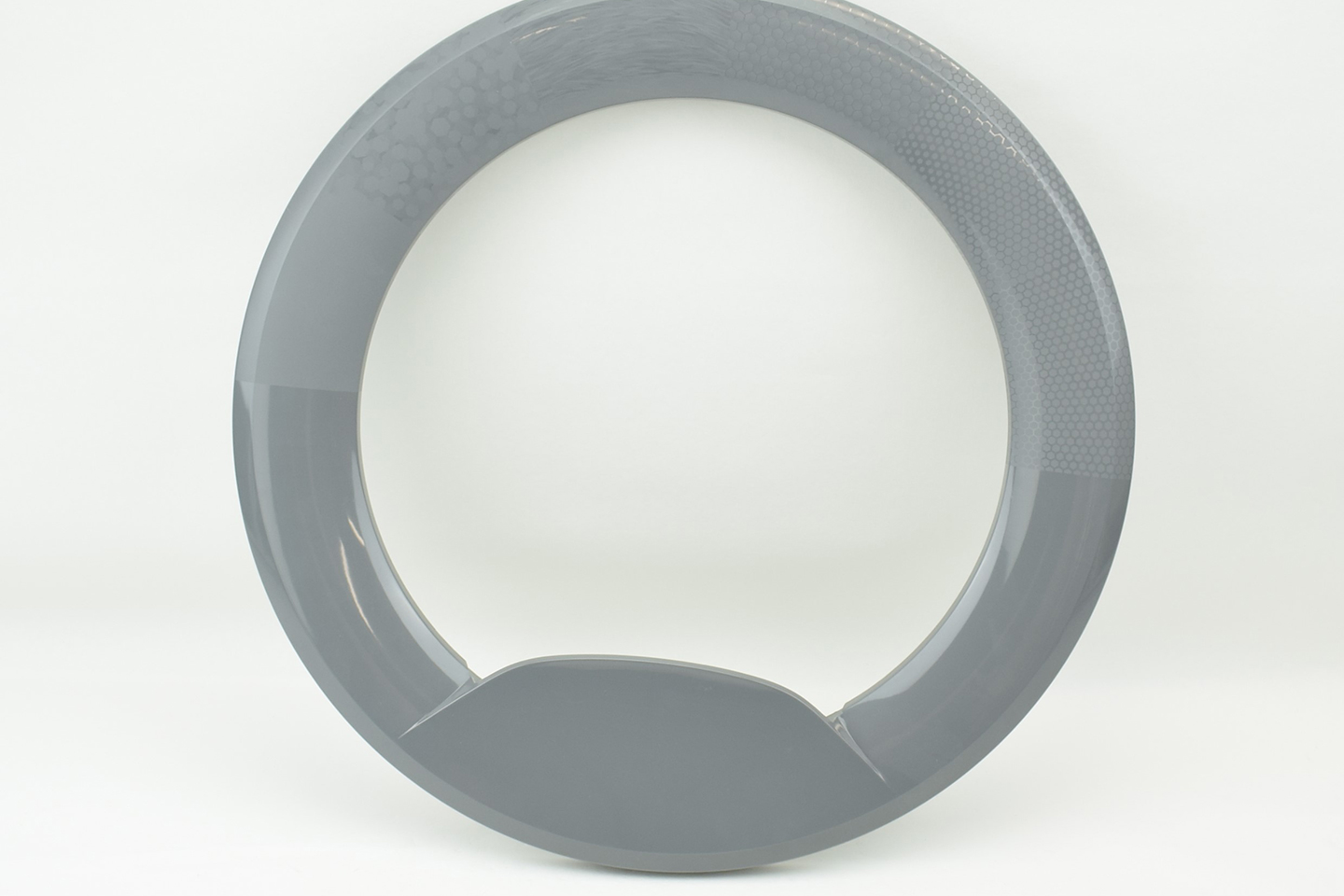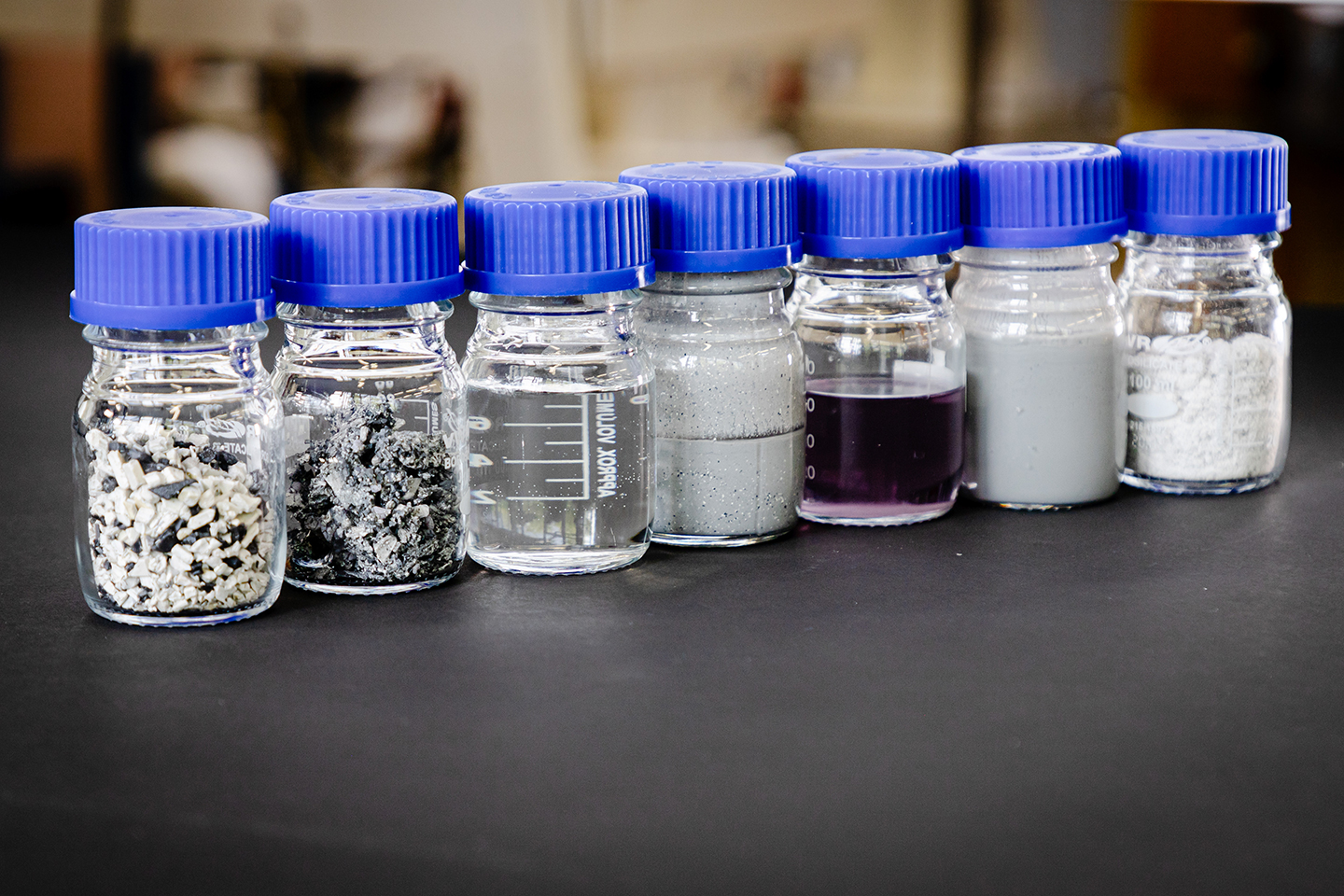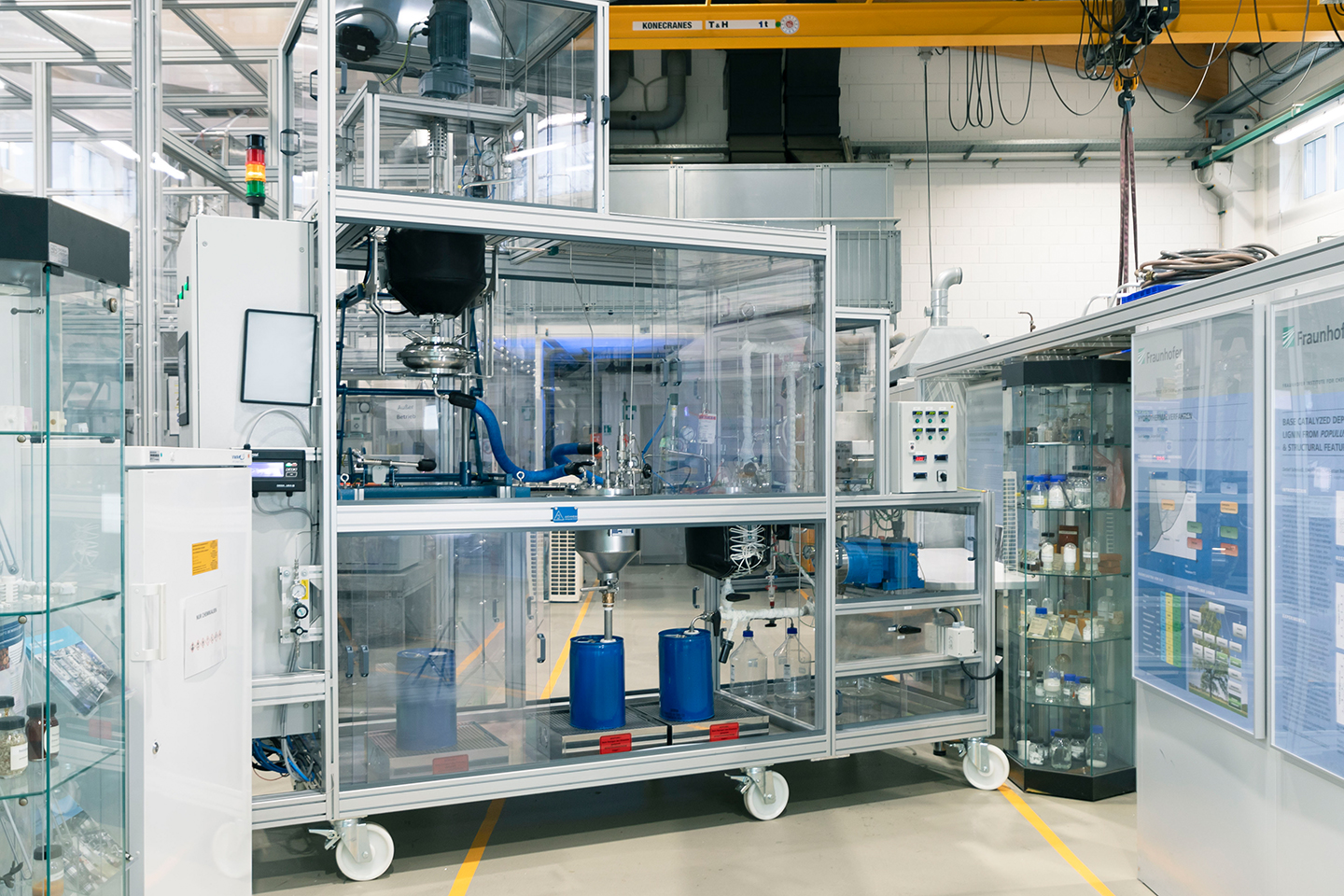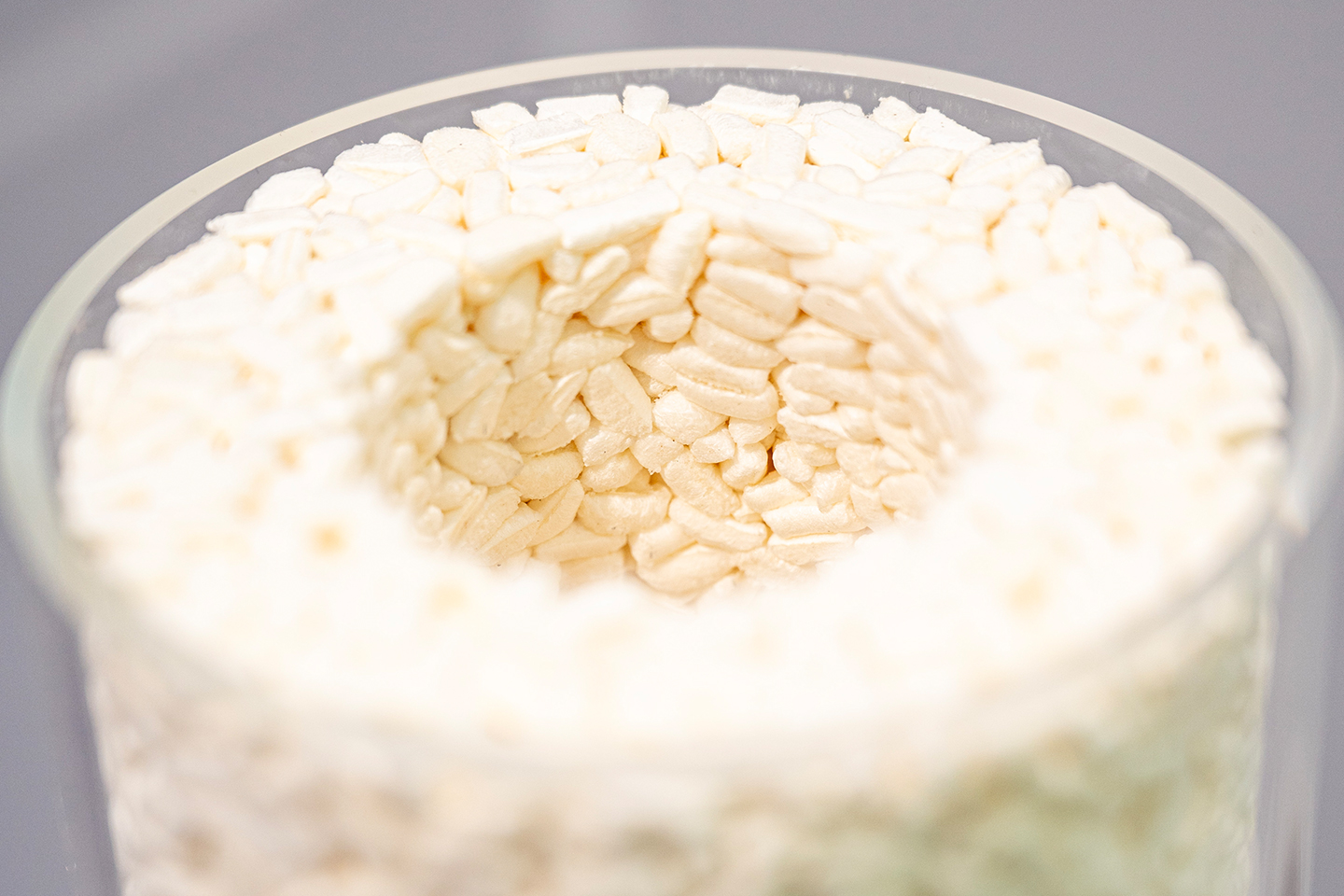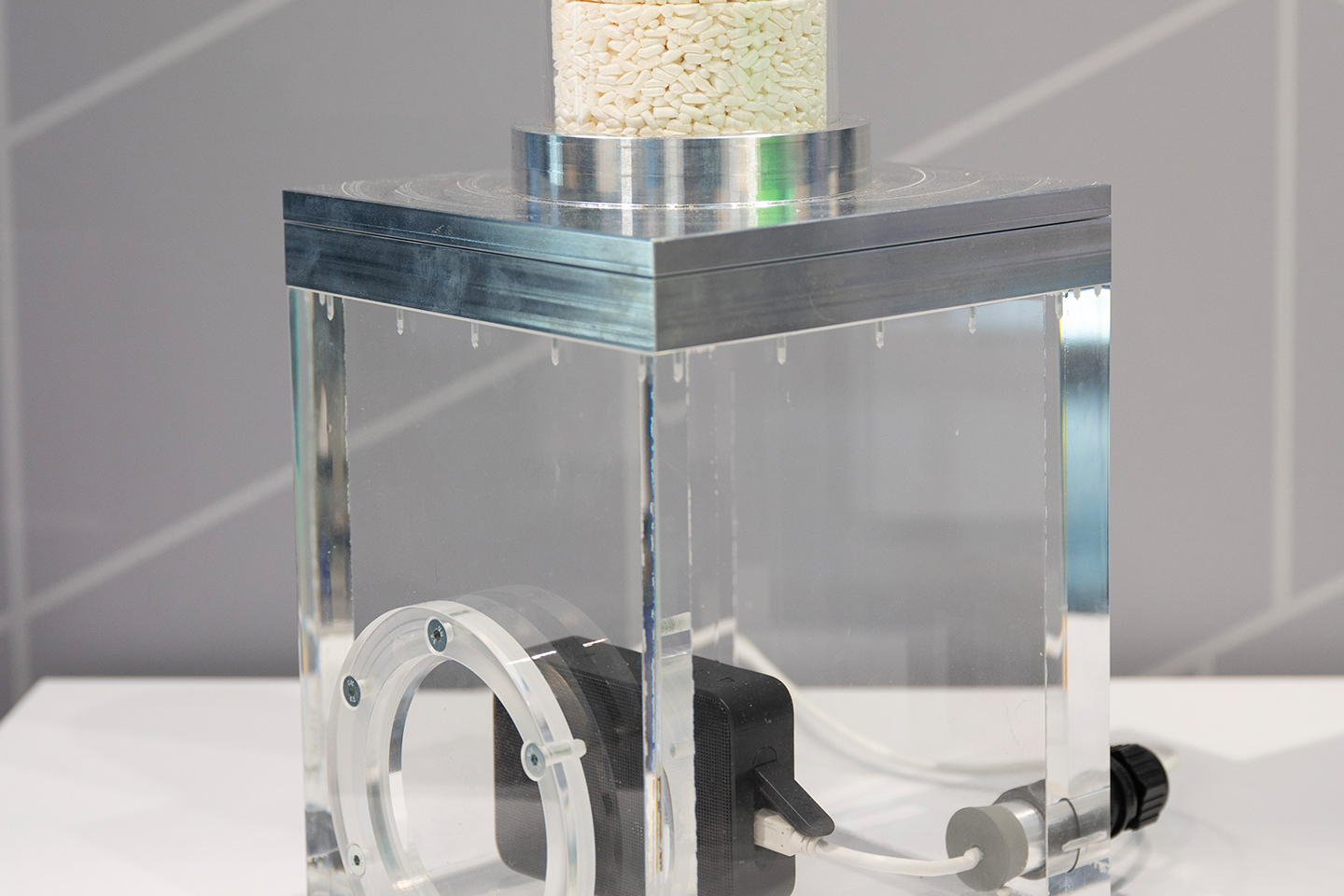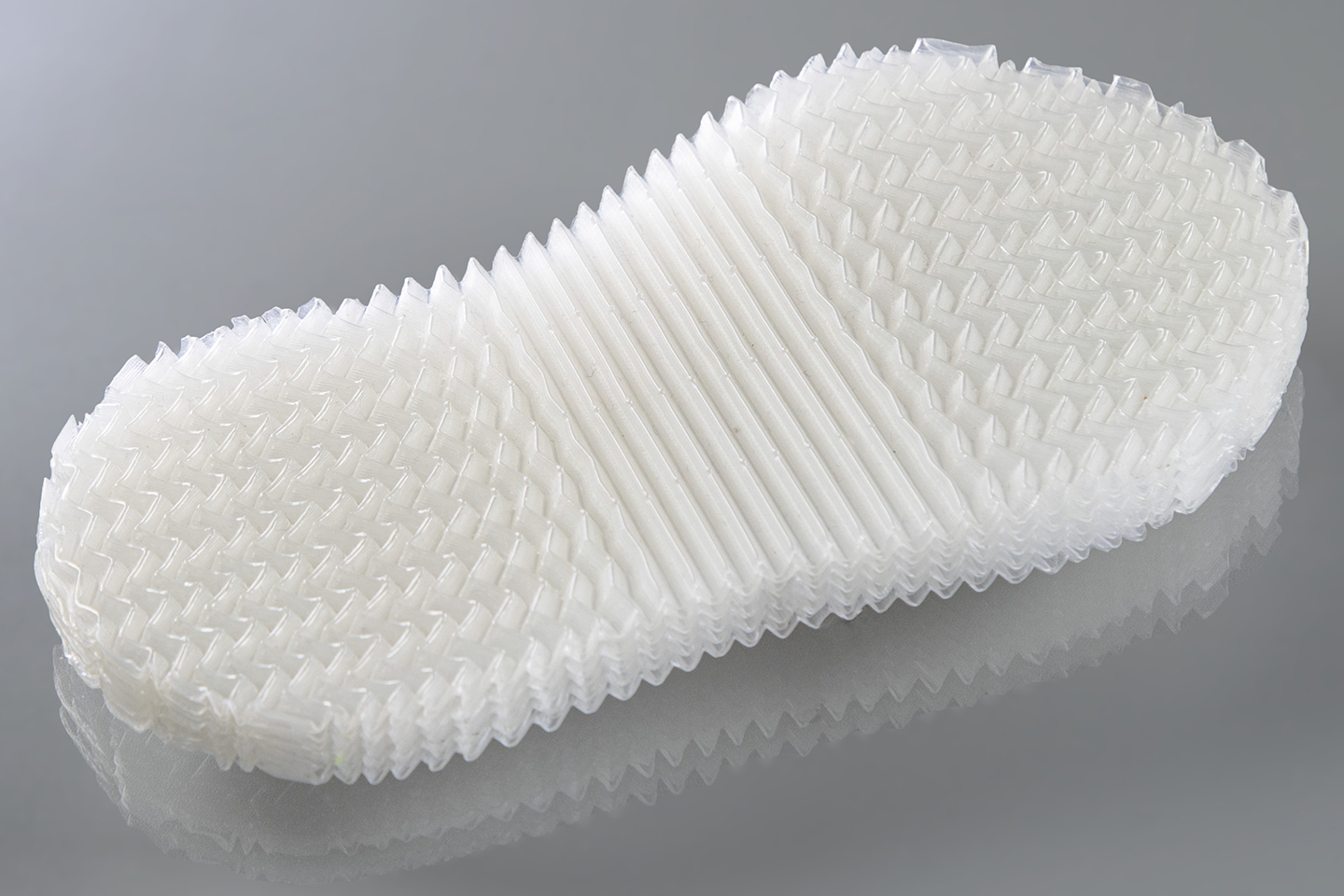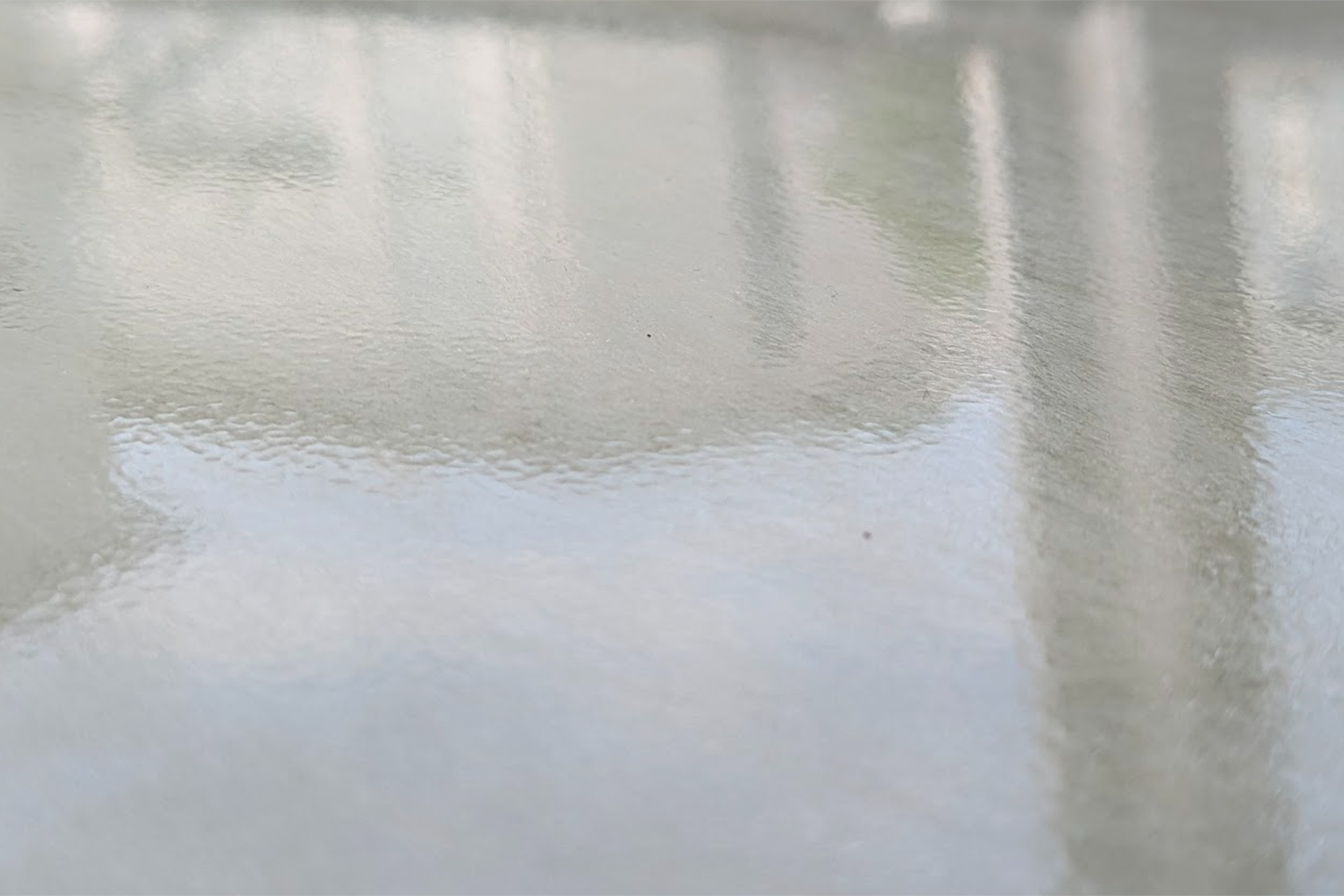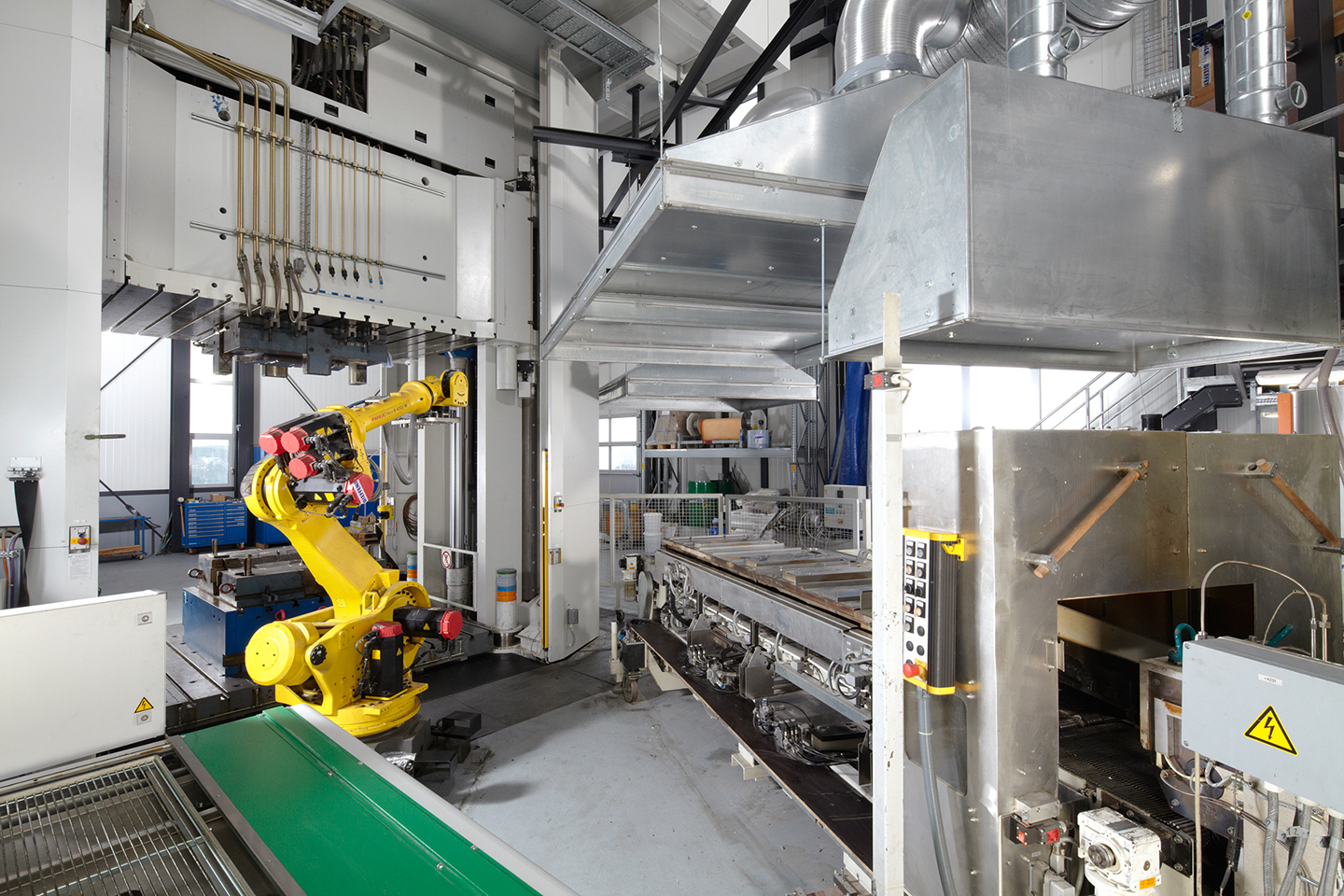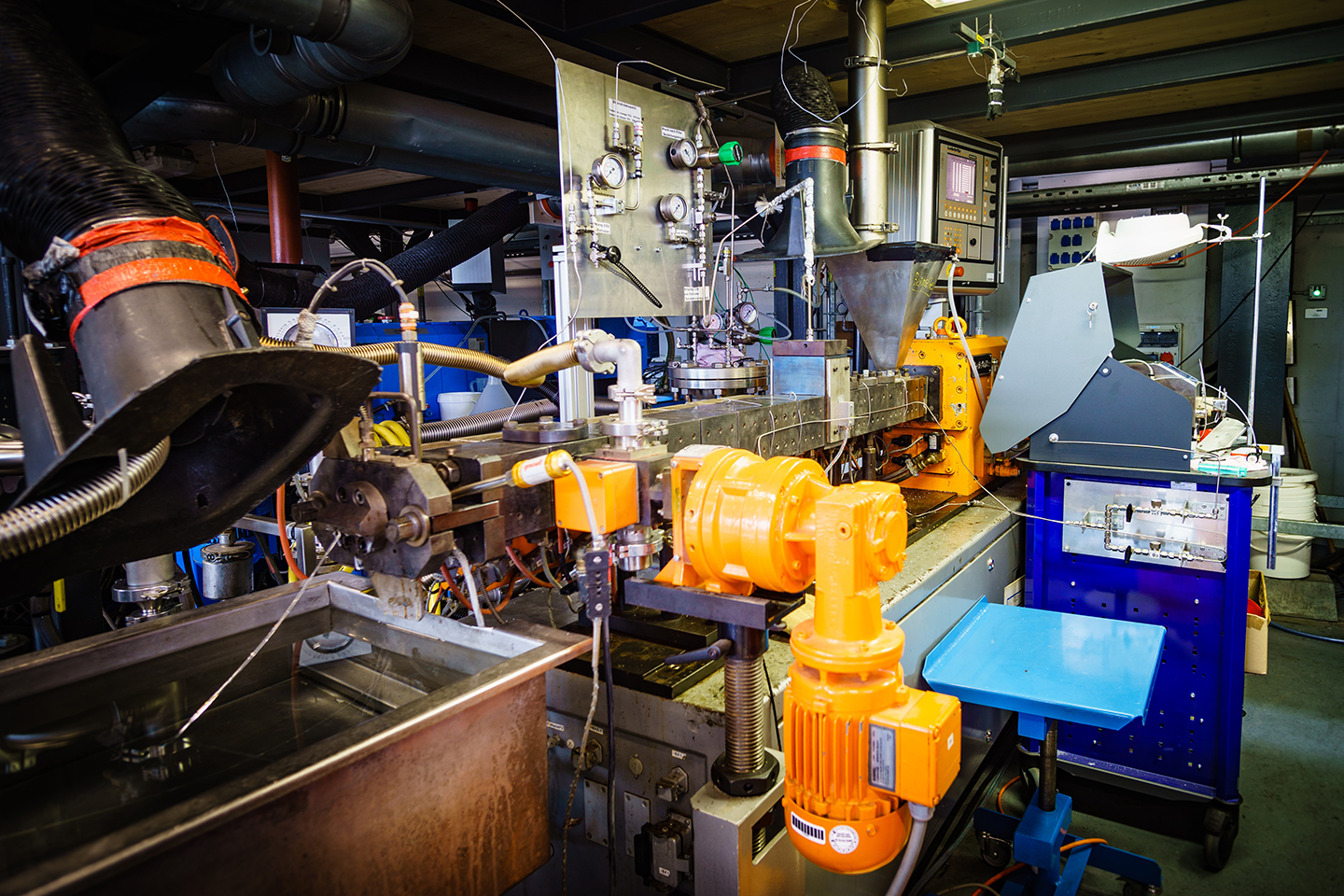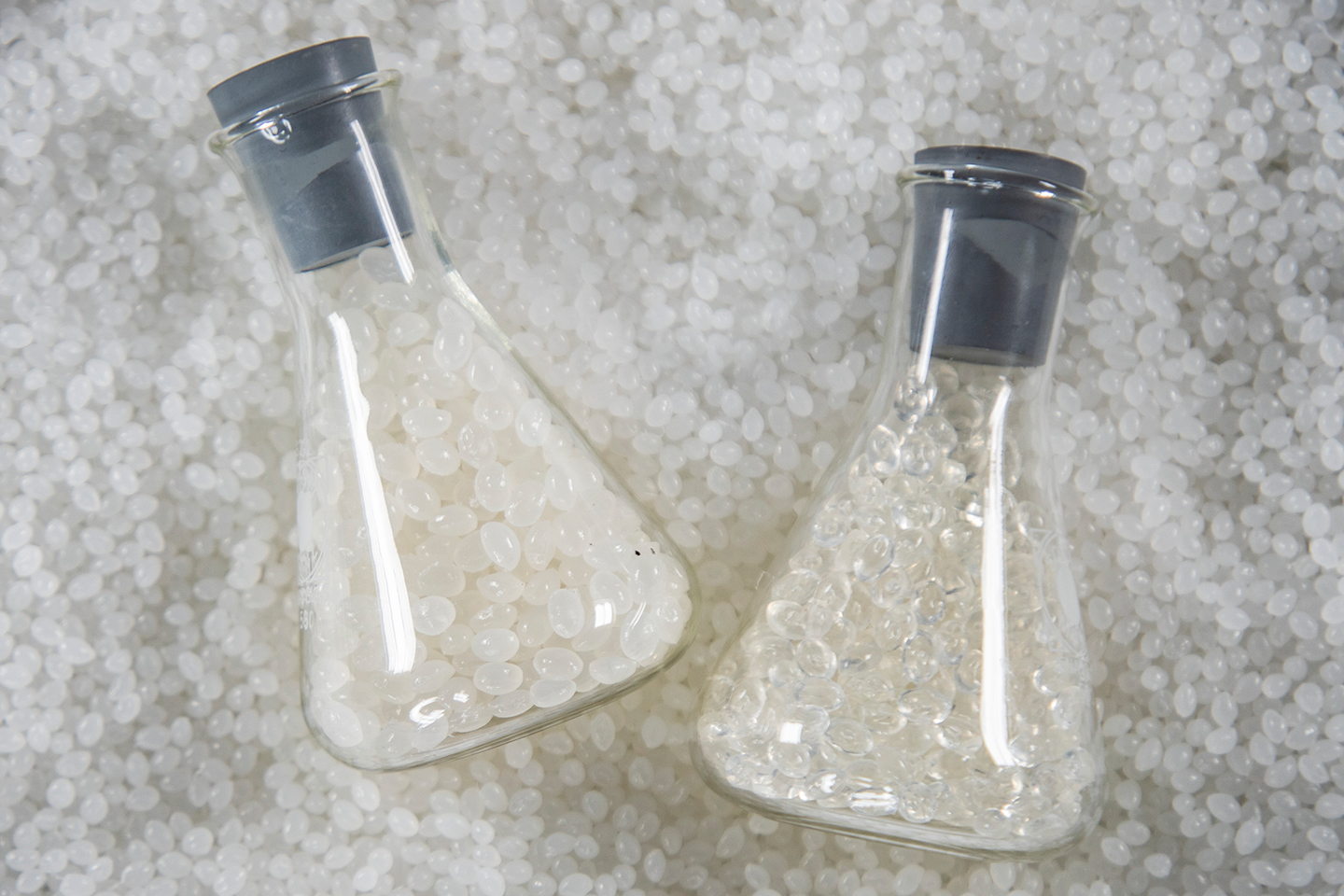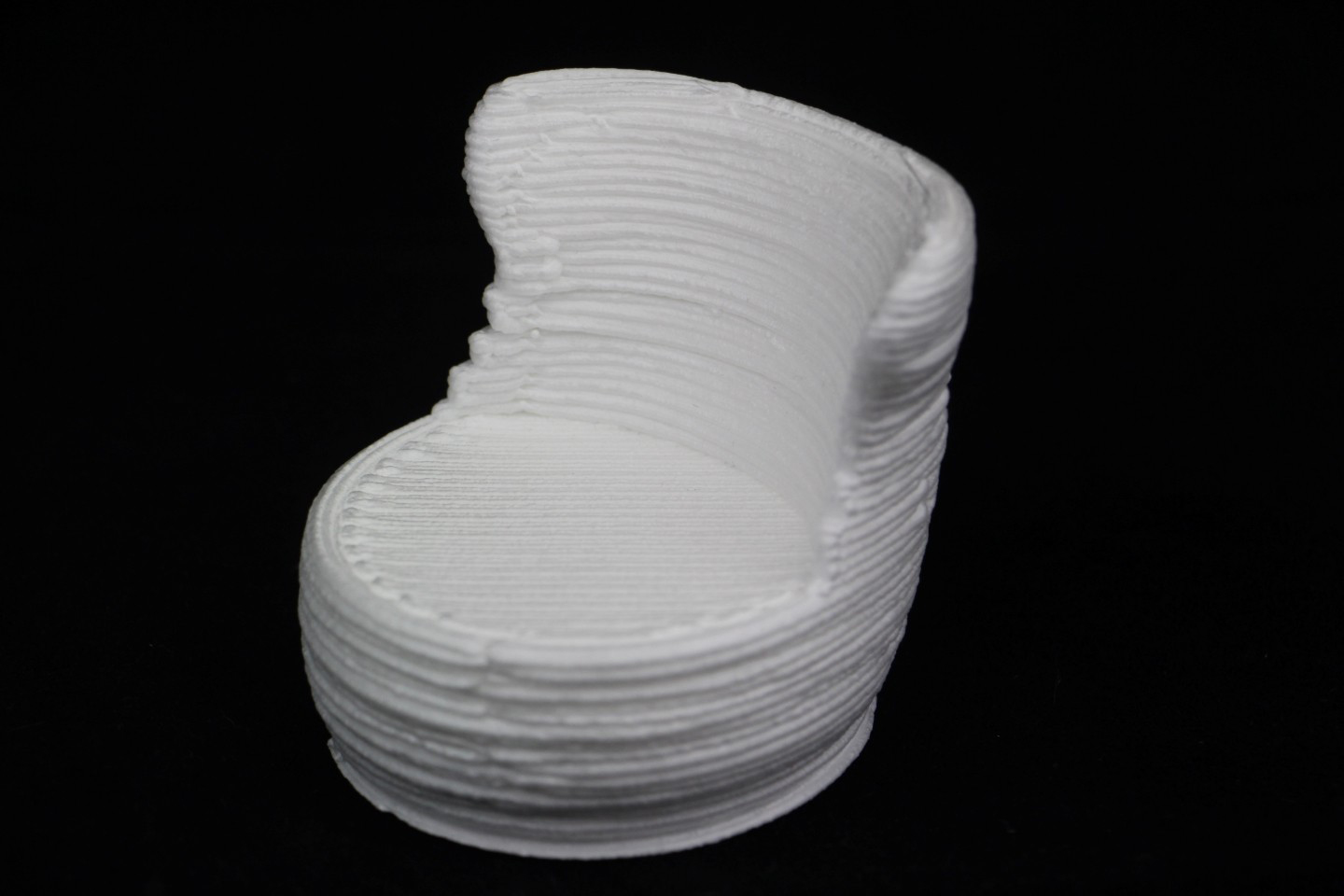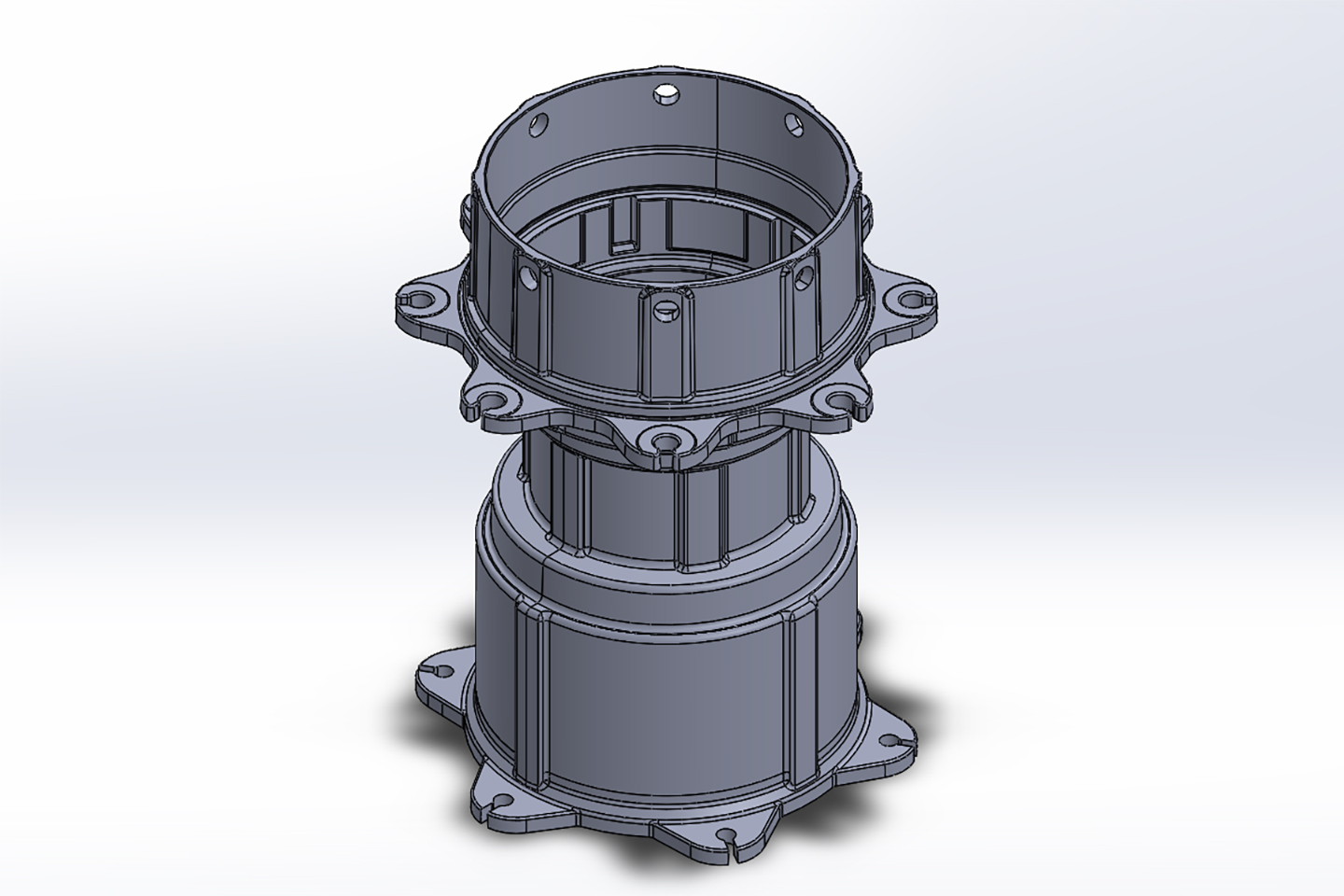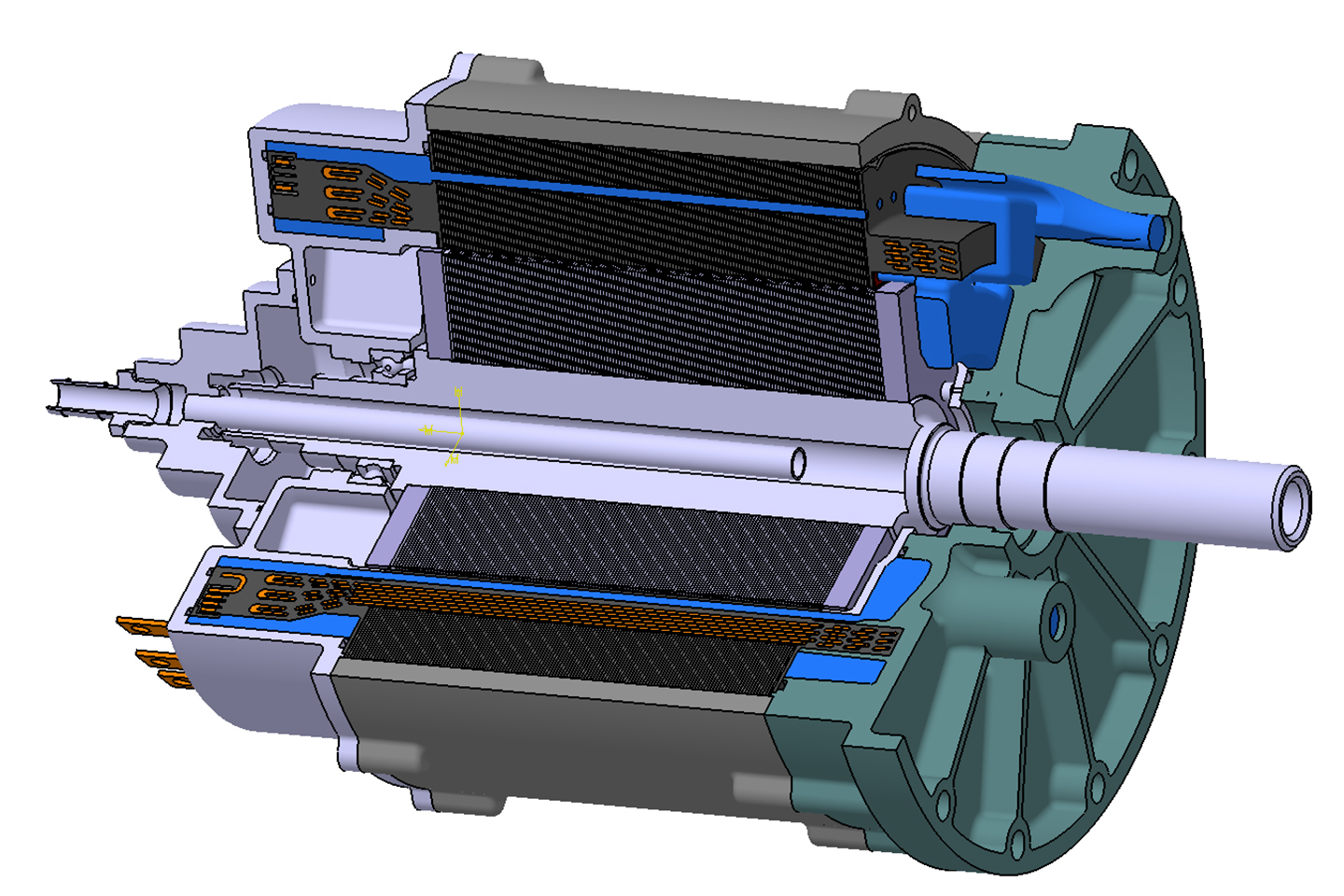The physically loaded 3D printing filaments developed at Fraunhofer ICT are ideal for producing 3D printed structures with a very low density. The optimized polymer formulation and the precisely coordinated loading process enable targeted foaming in the 3D printer. The foam density can be controlled over a wide range by adjusting the process parameters
These innovative filaments can be processed on conventional filament-based 3D printers (FDM) without the need for a special hardware upgrade.
This process combines the advantages of foam technology and additive manufacturing, providing a straightforward approach to the production of molded foam parts. The advantages include the fast printing of large-volume components, the production of customizable moulded foam parts and the ability to produce graded components.
Innovative foam materials
Today more than ever, industry and society are focusing on materials with high performance and resource efficiency as well as sustainable production methods. Foam materials such as bio-based foams made from PLA or those made from recycled materials such as recycled polystyrene make an important contribution to conserving raw materials.
Innovative foams made from technical thermoplastics, such as polyamides, also enable the development of new fields of application that could previously only be served by heavier, more material-intensive solutions.
Foams not only reduce the CO2 footprint of products during production due to their low material usage. Due to their special properties, such as excellent thermal insulation and low density, they also make a significant contribution to saving resources during the use phase. Examples of this are the reduction of heating and cooling energy in buildings or the energy savings in cars due to the reduced weight.
 Fraunhofer Institute for Chemical Technology ICT
Fraunhofer Institute for Chemical Technology ICT
